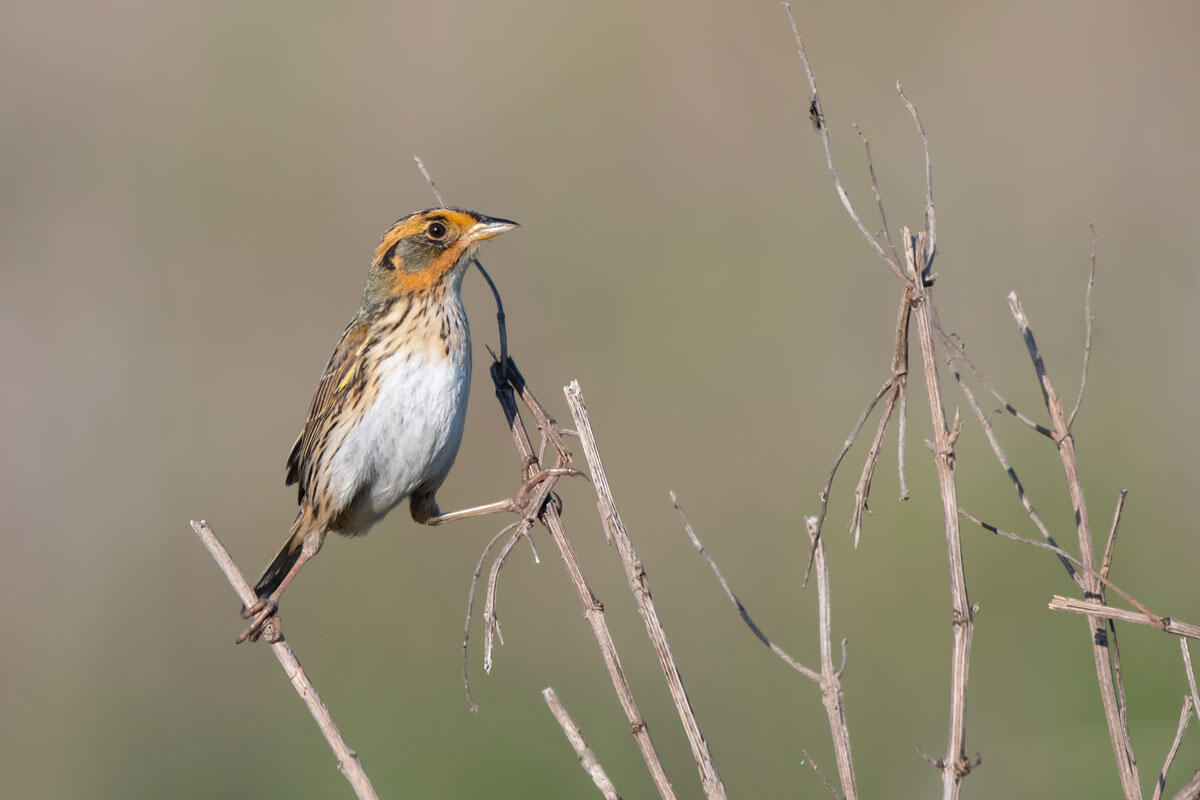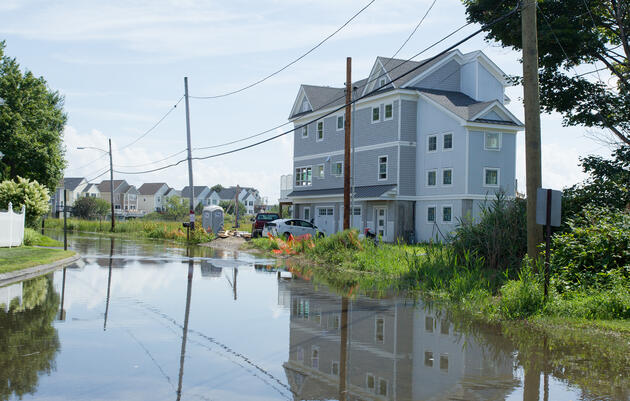Stratford, CT (October 25, 2021) – Connecticut’s coastline is getting an exciting refresh: After years of planning and fundraising, ground is being broken at Great Meadows Marsh, a Globally Important Bird Area, and part of the Stewart B. McKinney National Wildlife Refuge. On November 1, construction will officially begin to restore up to 33 acres of salt marsh and other important coastal habitat. Sign up here to stay updated on the project.
Great Meadows Marsh contains the largest block of un-ditched salt marsh remaining in Connecticut. Once more than 1,400 acres, the marsh is now less than 700 acres and portions of it no longer function properly due to dredged soils brought in as fill, colonization by non-native plants, and sea-level rise. The degraded marsh produces abundant mosquitoes that have plagued locals and visitors for years.
Local birders, fishermen, and wildlife enthusiasts know the site well, as a special place to spot the rare Snowy Owl or catch Striped Bass. It is also important habitat for horseshoe crabs and blue crabs, the beautiful and endangered Marsh Pink flower, Saltmarsh Sparrow and other migratory birds, and fish like Atlantic Silverside and Menhaden.
"The planned restoration of over 33 acres of salt marsh and other coastal habitats in Great Meadows will have a tremendous beneficial impact for a wide variety of unique species of wildlife and continue Stratford's tradition of focusing on the ecology of our region. We are proud to partner with Audubon Connecticut to involve high school students from Stratford in the planting effort this coming spring, through which they will gain vital experience in habitat restoration while making a difference for Stratford. The completed project will showcase amazing natural habitats to visitors, and we are excited to partner with Audubon and the other organizations involved to make this happen,” said Stratford Mayor Laura Hoydick.
Since the project was announced in 2019, it has grown to represent a $4.1M investment in Connecticut’s coastline. Just over $1M was originally raised for the effort; it now includes an additional $3.07M in funding from the U.S. Fish and Wildlife Service, the U.S. Environmental Protection Agency, The Nature Conservancy, the Robert F. Schumann Foundation, and the Jeniam Foundation. Initial funding came from three natural resource damage case settlements related to contaminated sites close to the area: Raymark Industries, Lordship Point Gun Club, and the Housatonic River/General Electric cases. These case settlements supported planning and engineering, and leveraged funds for the project construction and future monitoring.
Audubon Connecticut, the National Oceanic and Atmospheric Administration, Connecticut Department of Energy and Environmental Protection, and U.S. Fish and Wildlife Service are partnering on this exciting local restoration project. In addition to managing the construction, Audubon will offer opportunities for the community to get involved, primarily through planting native grasses and shrubs in spring.
“This is an exciting day for the Great Meadows Marsh project and all those who have spent years working toward this groundbreaking. As the state’s largest marsh restoration project, this will be a major investment in the health of Connecticut’s coastline. In the Senate, I’m continuing to fight for more funding to protect the Long Island Sound, support conservation efforts, and strengthen coastal resilience,” said Senator Chris Murphy.
“I am very pleased that the Great Meadows Marsh project is finally coming to fruition after many years of planning. Once this project is completed it will conserve and enhance natural areas that benefit ecosystem function and wildlife. It will also create better access to open space right here in Stratford. I applaud all those who have worked together on this important and historic project,” said Senate Republican Leader Kevin C. Kelly.

“The most exciting part of the project, from the perspective of protecting birds, will be when we test a fairly new strategy to create nesting habitat for the Saltmarsh Sparrow. This critically-threatened bird relies on healthy high marsh habitat to survive, and unfortunately our coastlines and their associated marshes are being squeezed by rising sea levels and human development,” said Corrie Folsom-O’Keefe, director of conservation for Audubon Connecticut. “As part of the restoration, we will create hummocks, or small mounds of earth, and plant them with salt marsh grasses, creating higher elevation areas for the birds to nest in. If effective, this strategy could be expanded to other marshes across Connecticut and beyond.”
Expected Project Outcomes Include:
- Mosquito populations reduced and human health concerns addressed. A more natural ebb and flow of salt water in and out of the marsh with the tides - rather than pools of sitting water - will reduce breeding grounds for mosquitoes.
- Native marsh vegetation and wildlife habitat re-established. ~170,000 native coastal plants and shrubs will be planted across 15 acres.
- Bird and other wildlife habitat created and/or improved. A new strategy will be tested to create Saltmarsh Sparrow nesting habitat. If effective, it could be expanded coast-wide.
- Fish and other aquatic habitat restored and/or improved. Soil fill and invasive plants will be removed to restore habitats for a variety of fish, crabs, and other aquatic animals that call saltmarshes and their creeks home.
- Improved access for the community. A long-closed trail will re-open, and one viewing platform will be removed and replaced with two new ADA-accessible platforms.
- Compensating for the impacts from pollution. Settlement funds from polluters that damaged the environment were leveraged to support these restoration efforts.
“The Great Meadow Marsh project will restore significantly degraded coastal marsh habitat and result in improved wildlife habitat. I am very pleased to know that as part of this project, Audubon Connecticut will be seeking to employ youth from the Bridgeport / Stratford area to help educate people about the benefits this project will bring to our community," said State Representative Joe Gresko.
"Restoration of the Great Meadows Marsh is a significant environmental accomplishment, thanks to years of tireless dedication by many. The Office of the Attorney General, in conjunction with our federal and state partners, always seeks to restore and support our vital natural resources. I am pleased to see funding from previous contamination cases directed to this critical work," said Attorney William General Tong.
Additional Information for the Public
October - March, visitors to Great Meadows Marsh will see restoration being completed on the property. From April – May, ~170,000 native plants and shrubs will be put in the ground.
It is anticipated that the current Service parking lot and road used to access the observation blind on the freshwater pond will be closed throughout the restoration. The railroad trail will likely be open in sections when those sections can be safely accessed. There is on-street parking available for rail-trail access.
Hunting will take place during the restoration period, as the hunting areas are outside the project area. Hunters will not be able to utilize the parking lot, as it will be closed.
MEDIA CONTACT: Sharon Bruce, sharon.bruce@audubon.org, 914-263-3083







